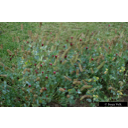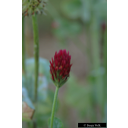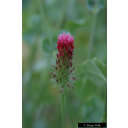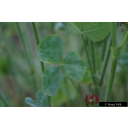Useful information about the taxon (species, subspecies, variety...)
Trifolium incarnatum L. 1753
Fabaceae (Leguminosae, Papilionaceae) (APG IV)
Taxon concept: The Plant List (2014), version 1.1
Trifolium incarnatum L. - Accepted: Trifolium incarnatum L. bei Zander 2008; Familie: Fabaceae (Leguminosae, Papilionaceae) (Zander 2008)
Trifolium incarnatum L. - Accepted: Trifolium incarnatum L. bei The Plant List (2010); Familie: Fabaceae (Leguminosae, Papilionaceae) (APG III)
Trifolium incarnatum L. - Accepted: Trifolium incarnatum L. bei The Plant List (2014), version 1.1; Familie: Fabaceae (Leguminosae, Papilionaceae) (APG III)
Trifolium incarnatum L. - Accepted: Trifolium incarnatum L. bei BfN Checklist Flora DE; Familie: Fabaceae (Leguminosae, Papilionaceae) (APG IV)
Trifolium incarnatum L. - Accepted: Trifolium incarnatum L. bei World Flora Online - APG IV (Angiosperms); Familie: Fabaceae (Leguminosae) (World Flora Online - APG IV (Angiosperms))
Trifolium incarnatum L. - Accepted: Trifolium incarnatum L. bei The Plant List (2010); Familie: Fabaceae (Leguminosae, Papilionaceae) (APG III)
Trifolium incarnatum L. - Accepted: Trifolium incarnatum L. bei The Plant List (2014), version 1.1; Familie: Fabaceae (Leguminosae, Papilionaceae) (APG III)
Trifolium incarnatum L. - Accepted: Trifolium incarnatum L. bei BfN Checklist Flora DE; Familie: Fabaceae (Leguminosae, Papilionaceae) (APG IV)
Trifolium incarnatum L. - Accepted: Trifolium incarnatum L. bei World Flora Online - APG IV (Angiosperms); Familie: Fabaceae (Leguminosae) (World Flora Online - APG IV (Angiosperms))
- Color of flower
- red
- Life form
- herbaceous, terrestrial, annual or biennial
Bundesamt für Naturschutz (BfN) (1999-2001 and ongoing): Floraweb - Daten und Informationen zu Wildpflanzen und zur Vegetation Deutschlands. www.floraweb.de.;
Erhardt, W., Götz, E., Bödeker, N. & Seybold, S. (2008): Der große Zander. Enzyklopädie der Pflanzennamen. Band 2. Arten und Sorten. Eugen Ulmer KG, Stuttgart (Hohenheim), 18. Aufl., 2103 S.;
Haider, M. et al. (2005): Wildbienenkataster. See: https://www.wildbienen-kataster.de;
Jäger, E. J. et al. (2007): Rothmaler - Exkursionsflora von Deutschland. Band 5: Krautige Zier- und Nutzpflanzen. Spektrum Akademischer Verlag, Aufl. 31.10.2007: 880.;
Maurizio, Anna et al. (1982): Nektar und Pollen - die wichtigsten Nahrungsquellen der Honigbiene. 4. Ehrenwirth, München, 3, überabeitete Auflage;
Oberdorfer, E. (2001): Pflanzensoziologische Exkursionsflora. Für Deutschland und angrenzende Gebiete. Eugen Ulmer Verlag, Stuttgart, 8., stark überarb. u. erg. Aufl, 1056 S. 978-3-8001-3131-0.;
Pritsch, Günter et al. (1985): Bienenweide.. Neumann-Neudamm, Melsungen;
Pritsch, Günter et al. (2007): 200 Trachtpflanzen erkennen und bewerten.. Kosmos, Stuttgart;
Schick, B. & Spürgin, A. (1997): Die Bienenweide. Eugen Ulmer Verlag, Stuttgart, Auflage: 4., völlig neubearb. u. erw. A., 216 S. 978-3800174188.;
The International Plant Names Index (2009). Published on the Internet http://www.ipni.org; Courtesy to IPNI, 2009. Exported from IPNI at date: 2009-09-22 20:17:51;
Westrich, P. et al. (2018): Die Wildbienen Deutschlands.. Ulmer Verlag ISBN 978-8186-0123-2.;
Erhardt, W., Götz, E., Bödeker, N. & Seybold, S. (2008): Der große Zander. Enzyklopädie der Pflanzennamen. Band 2. Arten und Sorten. Eugen Ulmer KG, Stuttgart (Hohenheim), 18. Aufl., 2103 S.;
Haider, M. et al. (2005): Wildbienenkataster. See: https://www.wildbienen-kataster.de;
Jäger, E. J. et al. (2007): Rothmaler - Exkursionsflora von Deutschland. Band 5: Krautige Zier- und Nutzpflanzen. Spektrum Akademischer Verlag, Aufl. 31.10.2007: 880.;
Maurizio, Anna et al. (1982): Nektar und Pollen - die wichtigsten Nahrungsquellen der Honigbiene. 4. Ehrenwirth, München, 3, überabeitete Auflage;
Oberdorfer, E. (2001): Pflanzensoziologische Exkursionsflora. Für Deutschland und angrenzende Gebiete. Eugen Ulmer Verlag, Stuttgart, 8., stark überarb. u. erg. Aufl, 1056 S. 978-3-8001-3131-0.;
Pritsch, Günter et al. (1985): Bienenweide.. Neumann-Neudamm, Melsungen;
Pritsch, Günter et al. (2007): 200 Trachtpflanzen erkennen und bewerten.. Kosmos, Stuttgart;
Schick, B. & Spürgin, A. (1997): Die Bienenweide. Eugen Ulmer Verlag, Stuttgart, Auflage: 4., völlig neubearb. u. erw. A., 216 S. 978-3800174188.;
The International Plant Names Index (2009). Published on the Internet http://www.ipni.org; Courtesy to IPNI, 2009. Exported from IPNI at date: 2009-09-22 20:17:51;
Westrich, P. et al. (2018): Die Wildbienen Deutschlands.. Ulmer Verlag ISBN 978-8186-0123-2.;
Diese Webseite verwendet Google Maps, um Karten und Standorte von Pflanzen in den Hohenheimer Gärten anzuzeigen. Dadurch werden unter Umständen Daten an Google weitergeleitet, was mit einer Verarbeitung Ihrer personenbezogenen Daten verbunden sein kann.
Die Datenschutzerklärung von Google finden Sie hier:
Datenschutzerklärung von Google
| Sex | Standort | Accession number | Planting year | Donation | IPEN | Lat. | Long. |
|---|---|---|---|---|---|---|---|
| Fabaceae | SYS-22604 | 2021-03-15 | DE-0-BREMR-xxxx/3214 | 0 | 0 |
Last update:
Taxonomic update: Database method on: 28.2.2020Update of the description: Robert Gliniars; latest by: Robert Gliniars on: 14.8.2012
In the list below you will find the geographic coordinates of many woody plants in the garden. In these cases the points are marked in the map.
If no coordinates are listed, the coordinate of the point in the map marks the middle coordinate of the section.




